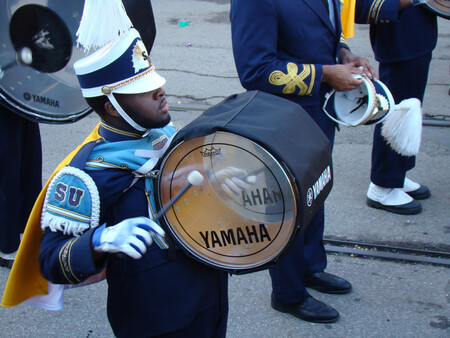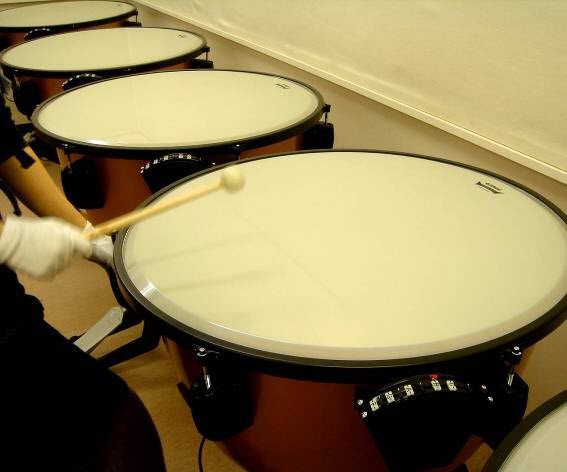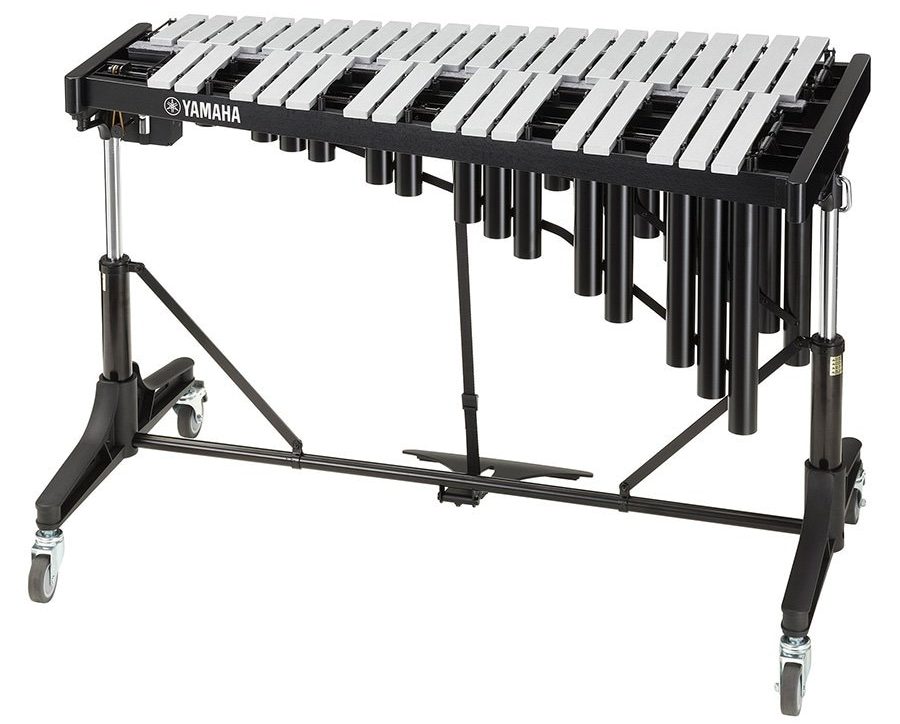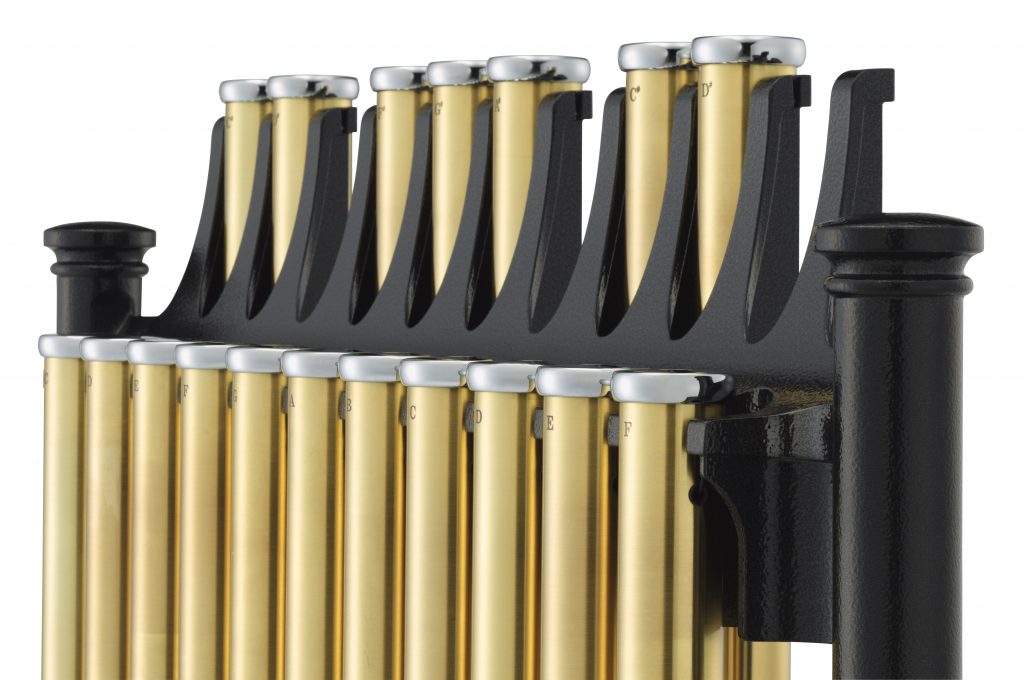Anatomy of Timpani
These are the parts that make up timpani.
Timpani (sometimes known as “kettle drums”) are used in many types of ensembles, including concert bands, marching bands, orchestras and even by some rock bands. They consist of a membrane (a head) stretched over a large bowl traditionally made of copper, and they’re played by striking the head with a specialized drum stick called a mallet. Modern timpani can be tuned quickly and accurately to specific pitches by skilled players using a movable foot pedal.
Here’s an annotated illustration of a typical timpano (“timpani” is plural for a collection of timpano), followed by a description of each part, in alphabetical order:
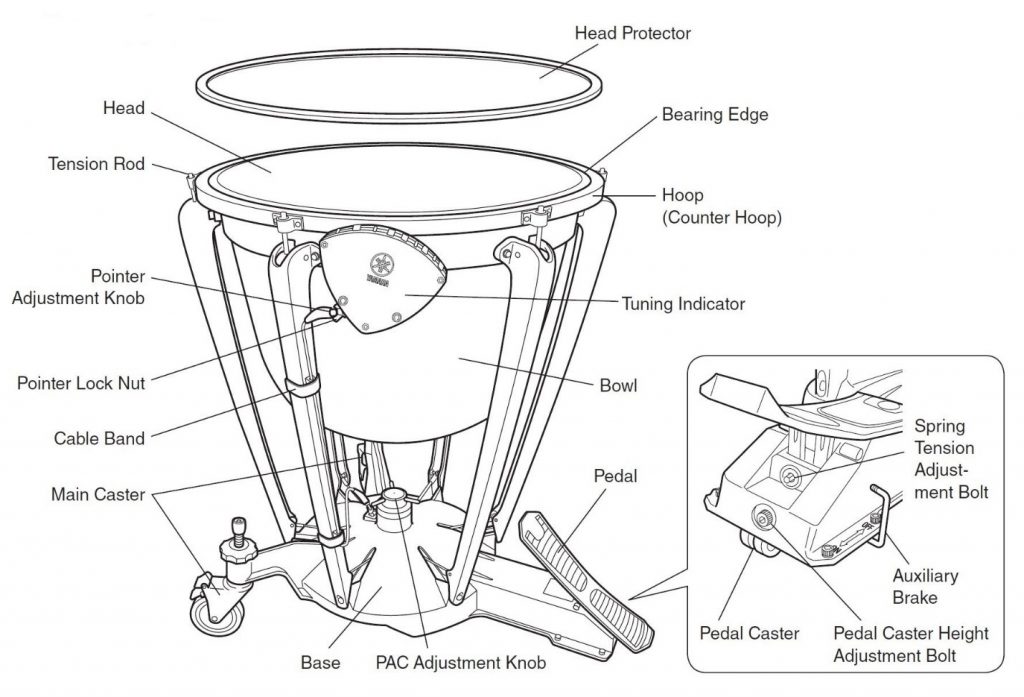
Auxiliary Brake. This is located under the pedal. When locked, it keeps the timpano from moving.
Base. The mechanisms for tuning are placed under the base of each timpano. The base is heavy in weight to keep each drum balanced and to promote resonance.
Bearing Edge. The lip of the timpano bowl is known as the bearing edge. This transfers the energy from the head to the bowl to create a pitch.
Bowl. The shape and material of the bowl’s surface help to determine the drum’s timbre. Hemispheric bowls produce brighter tones while parabolic bowls produce darker tones.
Cable Band. Attaches the timpano cable to the strut.
Head. These can be made of either animal skin (generally calf heads) or plastic. The two types of heads need to be attached differently (see the instructions that come with the head.) Plastic heads are easier to take care of since they are not as susceptible to changes in humidity and temperature; they’re also generally easier to install.
Head Protector. Protects the head from dust. Always place this on the timpano when the instrument is not in use.
Hoop (Counterhoop). The rim that tightens the timpano head.
Main Caster. Casters allow timpani to be moved with ease. They should be locked during performance to prevent the drums from moving from side to side.
PAC (Pedal Adjustment Knob). This mechanism lets you adjust pedal torque (pedal weight) while maintaining pedal balance. Turn the knob counterclockwise (left) to release the lock. To give the pedal a heavier feel, turn the knob clockwise.
Pointer Lock Nut. Locks the tuning indicator into place after fine-tuning.
Spring Tension Adjustment Bolt. Adjusting this bolt allows the tension of the pedal to be set to individual preference.
Tension Rod. This threaded metal rod is inserted into the lug casing. It can be tightened or loosened to tune the drum to the desired pitch.
Tuning Indicator. A scale of measurement used as a visual guide in tuning the pitch of each timpano.
Click here for more information about Yamaha timpani.











